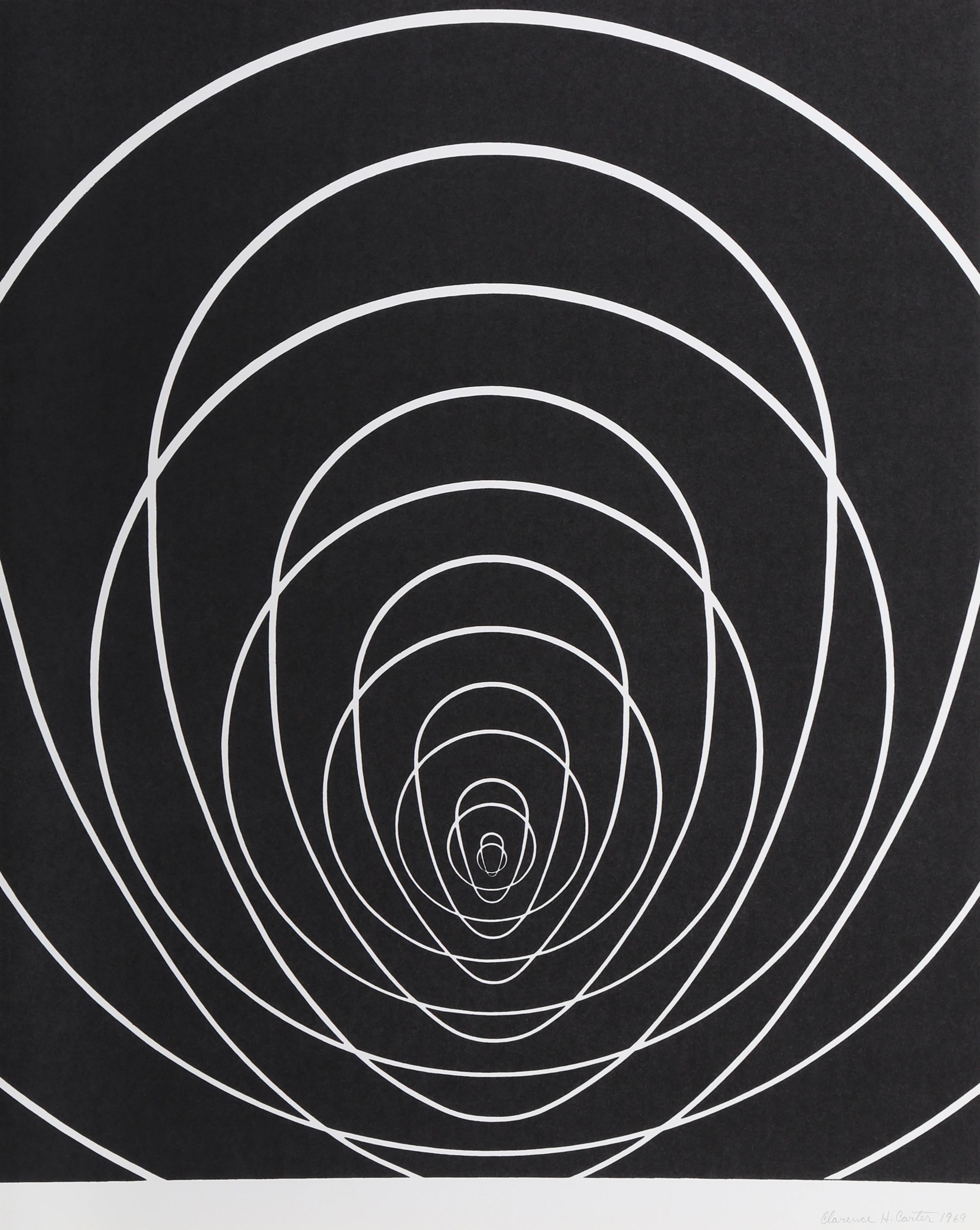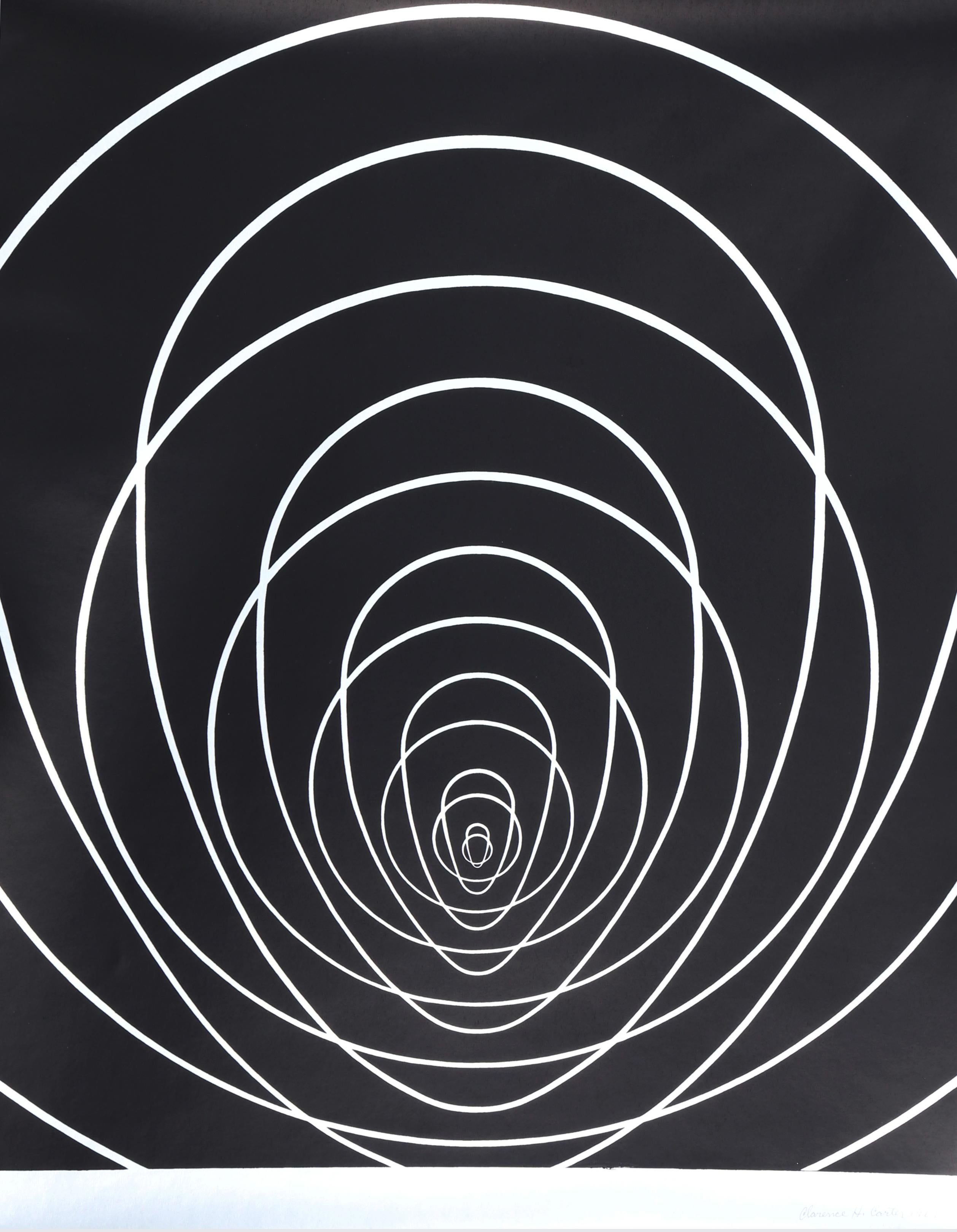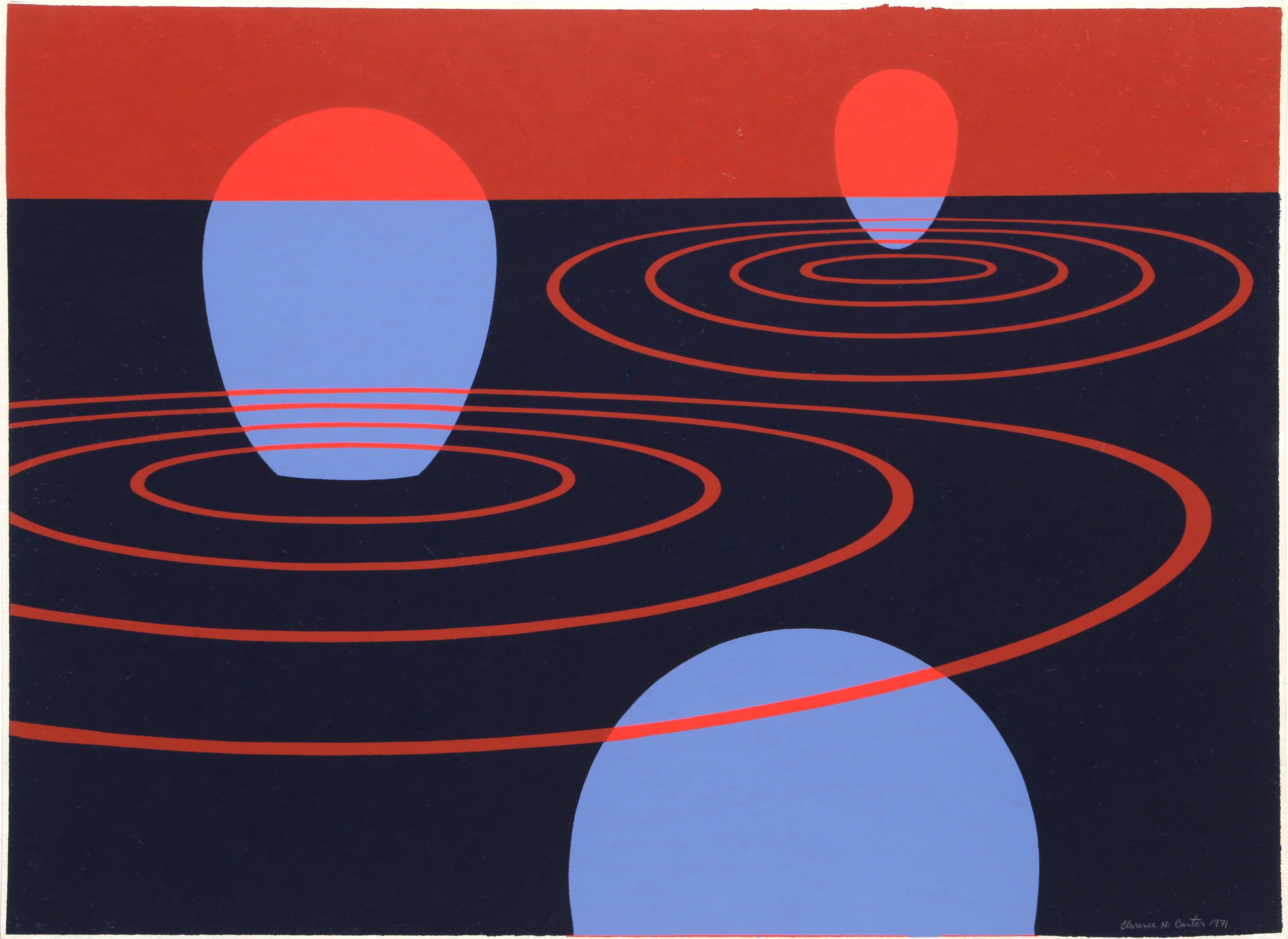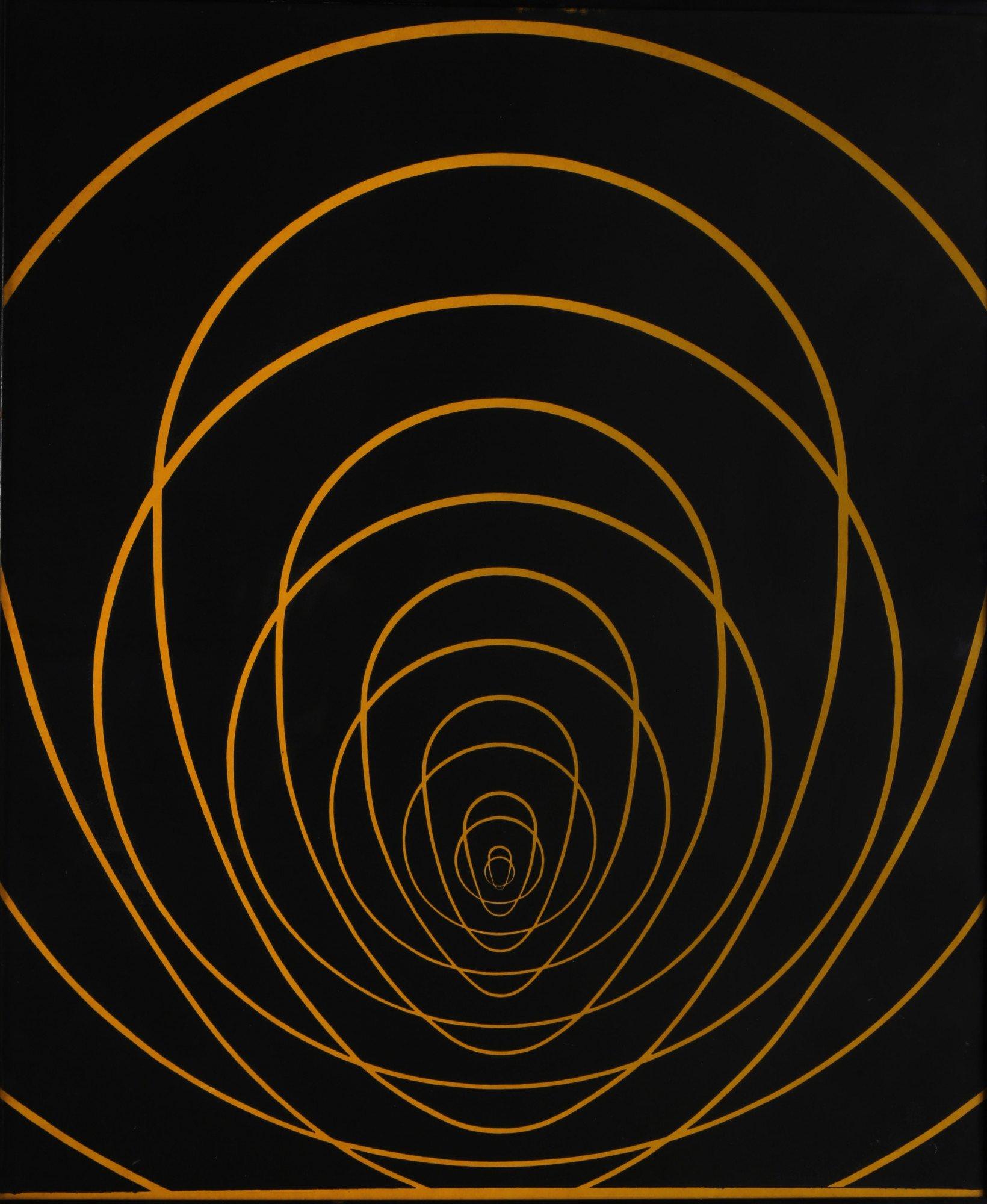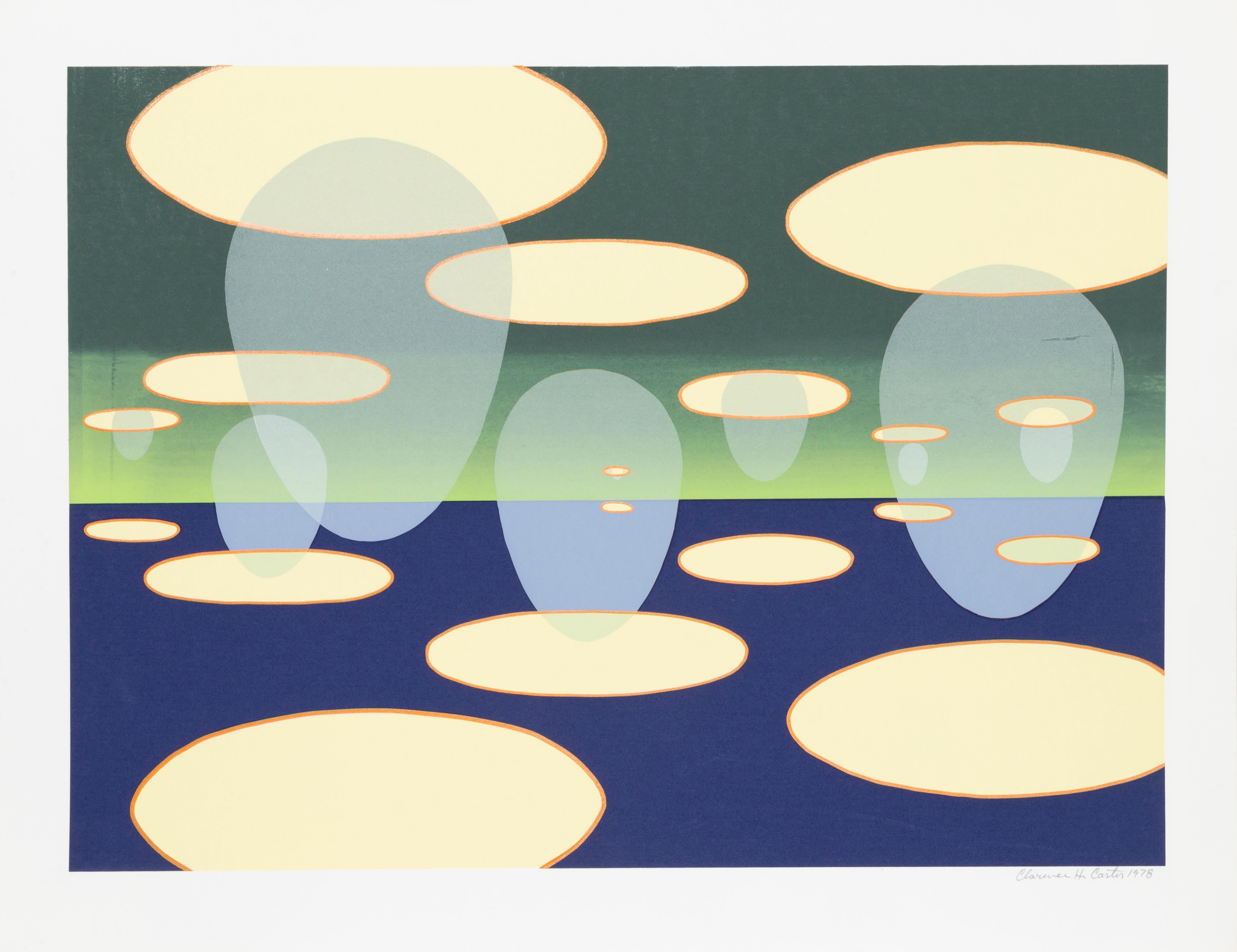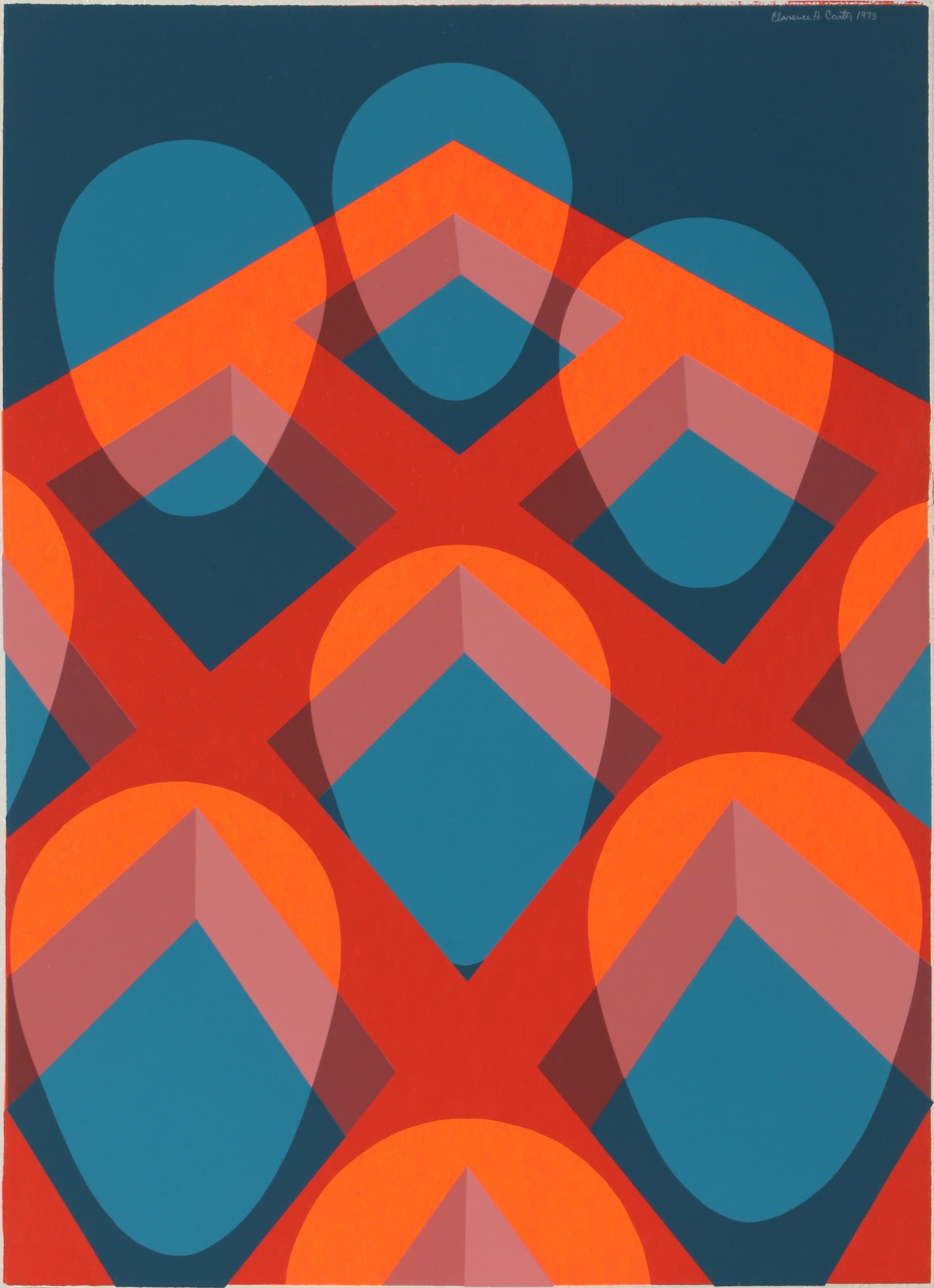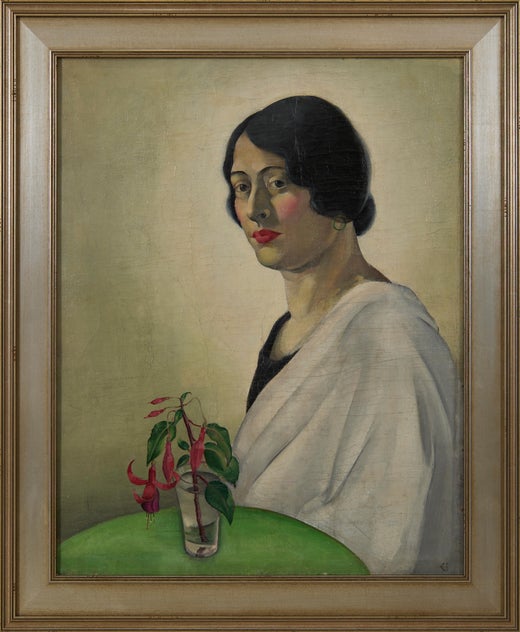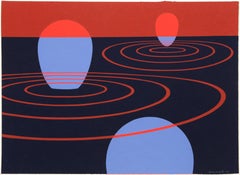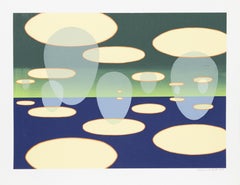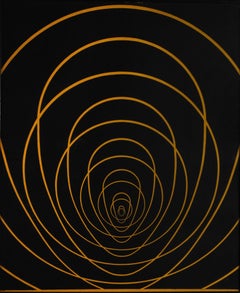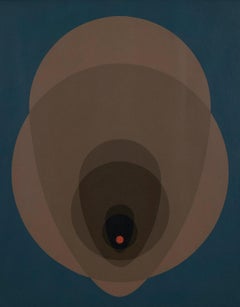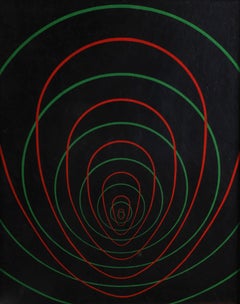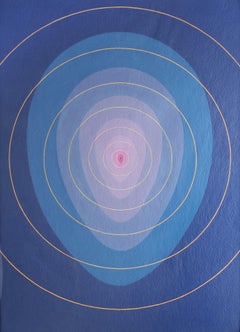Items Similar to Concentric Space (White), Signed Screenprint by Clarence Carter
Want more images or videos?
Request additional images or videos from the seller
1 of 6
Clarence Holbrook CarterConcentric Space (White), Signed Screenprint by Clarence Carter1969
1969
$650
£494.81
€565.68
CA$914.56
A$1,000.38
CHF 526.73
MX$11,943.48
NOK 6,713.19
SEK 6,140.97
DKK 4,225.02
About the Item
Concentric Space (White)
Clarence Holbrook Carter
American (1904–2000)
Date: 1969
Screenprint, signed and numbered in pencil
Edition of 50
Image Size: 23.5 x 19.5 inches
Size: 25 x 20 in. (63.5 x 50.8 cm)
- Creator:Clarence Holbrook Carter (1904-2000, American)
- Creation Year:1969
- Dimensions:Height: 25 in (63.5 cm)Width: 20 in (50.8 cm)
- Medium:
- Movement & Style:
- Period:
- Framing:Framing Options Available
- Condition:
- Gallery Location:Long Island City, NY
- Reference Number:Seller: RO190751stDibs: LU46615896442
Clarence Holbrook Carter
Clarence Holbrook Carter achieved a level of national artistic success that was nearly unprecedented among Cleveland School artists of his day, with representation by major New York dealers, scores of awards and solo exhibits, and streams of praise flowing from pens of the top art critics. Over the course of his 60+ year career Carter evolved from an exceptionally fine American Scene painter capable of evoking deep reservoirs of mood, into an abstractionist with a strongly surrealist bent. While his two bodies of work seem at first to be worlds apart, owing to their different formal vocabularies, they, in fact, explore virtually the same subject: the nexus between life and death and the transition from earth to spirit. The early work finds its expressive power through specific people, events, and landscapes—most of which are drawn from his experiences growing up in the river town of Portsmouth, Ohio—while the later work from the 1960s on evokes potent states of being through pure flat shape, color and form that read as universals. As his primary form he adopted the ovoid or egg shape, endowing it with varying degrees of transparency. Alone or in multiples, the egg moves through Carter’s landscapes and architectural settings like a sentient spirit on a restless quest. Born and raised in southern Ohio along the banks of the mercurial Ohio River and its treacherous floods, Carter developed a love of drawing as a child, and was encouraged by both his parents. He was self-directed, found inspiration all around him, and was strongly encouraged by the fact that his teenage work consistently captured art prizes in county and state fairs. Carter studied at the Cleveland School of Art from 1923-27, where he trained under painters Henry Keller, Frank Wilcox and Paul Travis. Returning to Cleveland in 1929, Carter had his first solo show, and through Milliken taught studio classes at the Cleveland Museum of Art from 1930-37. In 1938, he moved to Pittsburgh to teach at the Carnegie Institute of Technology until 1944. Carter’s American Scene paintings of the ’30s and ’40s, which launched his artistic star, are the works for which the artist remains best known. During and immediately after World War II, Clarence Carter realized his attraction to bold pattern, dramatic perspective and eye-catching hard-edged design was a poor fit with the prevailing style of Abstract Expressionism. Fortunately, these same hallmarks of his style were prized within the realm of commercial art. Around 1964 Carter acknowledged a need to break from the confines of representational painting. Once Carter had found a potent symbol in the egg, he used it to create an astounding body of imagery for the rest of his life. Among the most ambitious of all his later paintings were his Transections, a theological term meaning to cross, specifically between life and death.
About the Seller
4.9
Platinum Seller
Premium sellers with a 4.7+ rating and 24-hour response times
Established in 1979
1stDibs seller since 2014
3,212 sales on 1stDibs
Typical response time: 1 hour
- ShippingRetrieving quote...Shipping from: Long Island City, NY
- Return Policy
More From This Seller
View AllConcentric Space (White), Surrealist Screenprint by Clarence Holbrook Carter
By Clarence Holbrook Carter
Located in Long Island City, NY
Artist: Clarence Holbrook Carter, American (1904 - 2000)
Title: Concentric Space (White)
Year: 1969
Medium: Screenprint, signed and numbered in pencil
Edition: 50
Size: 29 x 22 inches
Category
1960s Op Art Abstract Prints
Materials
Screen
"Concentric Space (Silver)", Silkscreen by Clarence Holbrook Carter
By Clarence Holbrook Carter
Located in Long Island City, NY
Artist: Clarence Holbrook Carter, American (1904 - 2000)
Title: Concentric Space (Silver)
Year: 1969
Medium: Silkscreen on foil paper, signed and numbered in pencil
Edition: 50
Image...
Category
1960s Op Art Abstract Prints
Materials
Foil
Transection I, Silkscreen by Clarence Carter 1971
By Clarence Holbrook Carter
Located in Long Island City, NY
Artist: Clarence Holbrook Carter, American (1904 - 2000)
Title: Transection I
Year: 1971
Medium: Screenprint on Scintilla paper, signed and numbered in pencil
Edition: 75
Paper Size:...
Category
1970s Op Art Abstract Prints
Materials
Screen
Eschantos 31, Screenprint by Clarence Holbrook Carter
By Clarence Holbrook Carter
Located in Long Island City, NY
Artist: Clarence Holbrook Carter, American (1904 - 2000)
Title: Eschantos 31
Year: 1978
Medium: Serigraph, signed and numbered in pencil
Edition: 200, 30 AP
Size: 26 in. x 33.5 in. (...
Category
1970s Surrealist Abstract Prints
Materials
Screen
Mandalas, Surrealist Screenprint by Clarence Holbrook Carter 1973
By Clarence Holbrook Carter
Located in Long Island City, NY
Artist: Clarence Holbrook Carter, American (1904 - 2000)
Title: Untitled (Mandalas in a Grid)
Year: 1973
Medium: Screenprint on Scintilla paper, Signed and numbered in pencil
Edition...
Category
1970s Abstract Geometric Abstract Prints
Materials
Screen
Highway, Pop Art Screenprint by Clarence Holbrook Carter
By Clarence Holbrook Carter
Located in Long Island City, NY
Artist: Clarence Holbrook Carter, American (1904 - 2000)
Title: Highway
Year: 1979
Medium: Screenprint, signed and numbered in pencil
Edition: 200
Image Size: 30 x 22 inches
Paper Si...
Category
1970s Op Art Abstract Prints
Materials
Screen
You May Also Like
Expanding Mandala, Black and Orange Abstract Oval Mid-Century Painting
By Clarence Holbrook Carter
Located in Beachwood, OH
Clarence Holbrook Carter (American, 1904-2000)
Expanding Mandala, c. 1970s
Acrylic on scintilla
23 x 30 inches
Clarence Holbrook Carter achieved a level of national artistic success...
Category
1970s Abstract Abstract Paintings
Materials
Acrylic
Mandala No. 15, Abstract Ovoid Geometrical Mid-Century Painting Cleveland School
By Clarence Holbrook Carter
Located in Beachwood, OH
Clarence Holbrook Carter (American, 1904-2000)
Mandala No. 15, 1969
Acrylic on paper
Signed and dated verso
27.5 x 22 inches
Clarence Holbrook Carter achieved a level of national ar...
Category
1960s American Modern Abstract Paintings
Materials
Acrylic
Green and Red Mandala, Abstract Oval Painting by Ohio Artist Clarence Carter
By Clarence Holbrook Carter
Located in Beachwood, OH
Clarence Holbrook Carter (American, 1904-2000)
Green and Red Mandala, 1969
Acrylic on scintilla
Signed and dated lower right
24.75 x 18 inches
Clarence Holbrook Carter achieved a l...
Category
1960s Abstract Abstract Paintings
Materials
Acrylic
Mandala No. 5, Blue Abstract Ovoid Mid-Century Painting
By Clarence Holbrook Carter
Located in Beachwood, OH
Clarence Holbrook Carter (American, 1904-2000)
Mandala No. 5, 1968
Acrylic on scintilla
Signed on verso
29.5 x 22 inches
Clarence Holbrook Carter achieved a level of national artist...
Category
1960s Abstract Abstract Paintings
Materials
Acrylic
Blue and Red Space
By Clarence Holbrook Carter
Located in Fairlawn, OH
Blue and Red Space
Ilk Screen, 1971
Signed and dated lower right (see photo)
editioned lower left (see photo)
Edition: 75 (75/75)
Sheet size: 22 1/8 x 29 7/8"
Image: 21-7/8 x 29-5/8"...
Category
1970s Op Art Abstract Prints
Materials
Screen
Reverberations, mid-century abstract surrealist black acrylic painting
By Clarence Holbrook Carter
Located in Beachwood, OH
Clarence Holbrook Carter (American, 1904-2000)
Reverberations, 1970
Acrylic on illustration board
Signed lower left
20 x 30 inches
Mid-century abstract surrealist black acrylic painting...
Category
1970s Surrealist Abstract Paintings
Materials
Acrylic
Read More
Romare Bearden’s Humanity Infuses His Bright, Bold Art
Through collage, painting and printmaking, the artist foregrounded Black life in America in revolutionary new ways.
Chryssa’s 1962 Neon Sculpture Was Way ahead of the Art-World Curve
By working with lettering, neon and Pop imagery, Chryssa pioneered several postmodern themes at a time when most male artists detested commercial mediums.
More Ways To Browse
Alfred MANESSIER On Sale
Andy Warhol Sunset
Art Poster Helen Frankenthaler
Banksy Welcome Mat
Calder Ea
Calder Flowers
Calder Lithograph Balloons
Calder Lithograph Pyramids
Calder Mcgovern
Calder Pyramid Prints
Carlo Scarpa Print
Catherine Peet
Chandler Pastel
Chateau De Culan
Chihuly Lithograph
Christopher Wool Poster
Dali Amour Jaune
Dali Les Amours Jaunes
